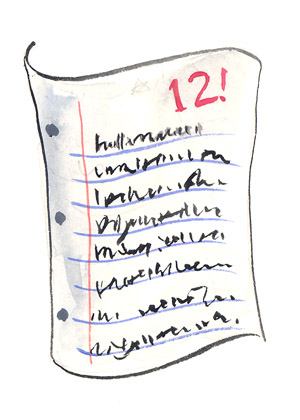While you’re here, be sure to join my SAT prep email list – I’ll send you an instant download of my Urgent Report on SAT Reading and follow it up with other subscriber-only content!
How to write a great 5-paragraph SAT Essay
So, you’ve learned about basic SAT Essay Structure, great SAT Essay Evidence, how to use effective essay transitions, and how to write a great SAT essay introduction, body paragraph, and conclusion.
So let’s fit it all together. A great five-paragraph essay is more than the sum of the parts; it is not just an intro, three separate body paragraphs, and a conclusion.
A great essay has a sense of flow and logic.
All of its sentences and every word in them has a purpose.
That purpose is to serve the thesis. There is no other purpose.
All words, sentences, evidence, and paragraph structures are intended to support your thesis.
The fact that each paragraph serves the thesis is what makes a five-paragraph essay unified, even though each paragraph follows a different form and serves a different purpose.
Get Exclusive SAT Prep Tips!
I want to send you more tips to help your SAT score, but I need your email address to stay in touch. Enter your email below so I can send you my reports on the SAT and other subscriber-only bonuses.
Each paragraph is essential in its own way. It’s important to have a mental birds-eye view of how the paragraphs function as a team.
Purpose of the Intro Paragraph
The intro supports a thesis by making the thesis clear and giving the road map for how you will prove it.
One of the most important strategic moves you can make to do this is to rephrase the prompt.
The intro makes the thesis clear by stating it in its purest, simplest form, with no complication.
Either, “Yes, [blah blah] is always [blah blah]” or “No, [blah blah] never/not necessarily [blah blah].”
The road map, or introduction of evidence, is just detailed enough so the reader is not left hanging, wondering how you will ever prove your thesis.
The road map does not prove the thesis, but it promises that the thesis can be proven, and reassures the reader that you have the evidence to prove it.
After the introduction has done these two things, it has served its purpose.
It does not need to get fancy or over-complicated. Simply do these two things and move on to the body.
I also like to use a cool vocab word or two during the intro in an attempt to impress the graders right from the beginning!
How to write great body paragraphs:
Your body supports and serves the thesis by following up on what the intro promised.
Your thesis is rephrased and restated in each body paragraph, and you highlight the points from your evidence that supports your thesis.
The thesis and its keywords weave through the body paragraphs constantly.
If more than two full sentences have gone by without directly linking to the thesis, you are probably getting off topic.
The body paragraphs are where it is easiest to get off-topic, but where it is most important to stay on-topic.
A good set of three body paragraphs finds common ground between three pieces of dissimilar-seeming evidence.
The three body paragraphs point out important similarities between your evidence.
This common ground must be shown to connect directly back to the keywords in your thesis.
Body paragraphs must transition gracefully from one to the next through use of connecting words and phrases such as “Similarly,” or “More proof can be found,” etc. Use these words at the start of the second and third body paragraphs.
Ideas must also transition smoothly. Luckily, if all body paragraphs are directly supporting the thesis, and transition words are used, the ideas will also transition easily and smoothly.
What to do in the conclusion:
The conclusion restates your thesis and SAT essay evidence, and takes up extra blank space on the page.
These are the only two essential functions of the conclusion.
However, an ideal conclusion is also interesting and upbeat, which will make the grader more likely to give you a higher score.
Because excessive repetition is not pleasant to read, it is important to rephrase your previous wordings in the conclusion even though you are just restating your own words.
Restate your evidence briefly if you are almost to two pages or almost out of time.
However, you should go more in-depth in your restatement if you have plenty of time and/or need to make your essay longer.
To end on an upbeat note, speculate about how things (related to the prompt) will improve in the future. This usually works for any prompt and requires no facts, just cheerful fluff.
To end on a creative note, ask a rhetorical question or take a unique stance about something relevant to the topic that the grader might find interesting. Remember, they’re just another human being. Show a little of your own unique personality and they will surely be interested!
The conclusion is also a great last chance to show off your vocabulary!
Check out my books on SAT Essay Evidence and SAT Essay Strategies!
Further Reading:
Introduction to SAT Essay Structure
How to Write a Great SAT Essay Intro Paragraph
Top 10 Tips for the SAT Essay
4 (More) Tips for a Better SAT Essay
Additional Resources:
Top 30 Examples to Use as SAT Essay Evidence (e-Book)
Write the Best SAT Essay of Your Life! (e-Book)
Conquer SAT Vocabulary (Video Course)
Before you go, don’t forget to sign up for the SAT mailing list so I can send you a download of my Urgent Report on SAT Reading and other subscriber-only exclusive content!


















Wow, I learned a ton just reading this one – can’t wait to glean from the rest of your fantastic info! My bright son, excellent writer, only got a 7 total on his SAT essay while doing extremely well overall… guess we should’ve had your info first! Now I know for kid #2 !!! Thanks!
Glad you found it helpful! Thanks for stopping by!